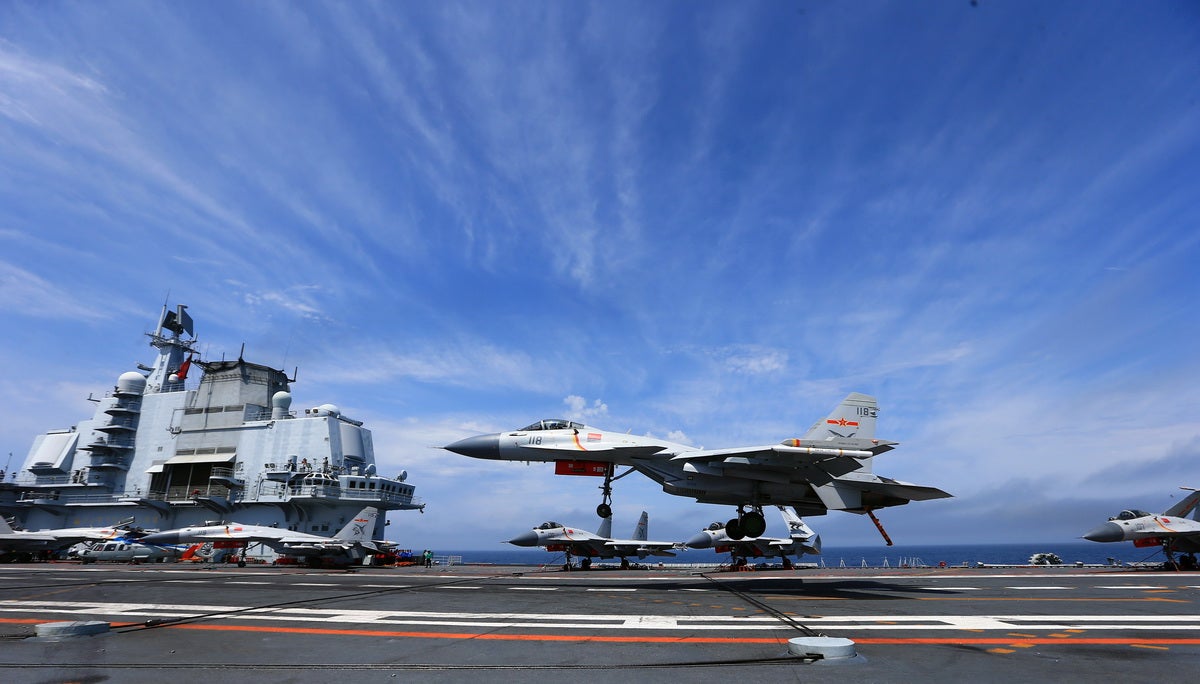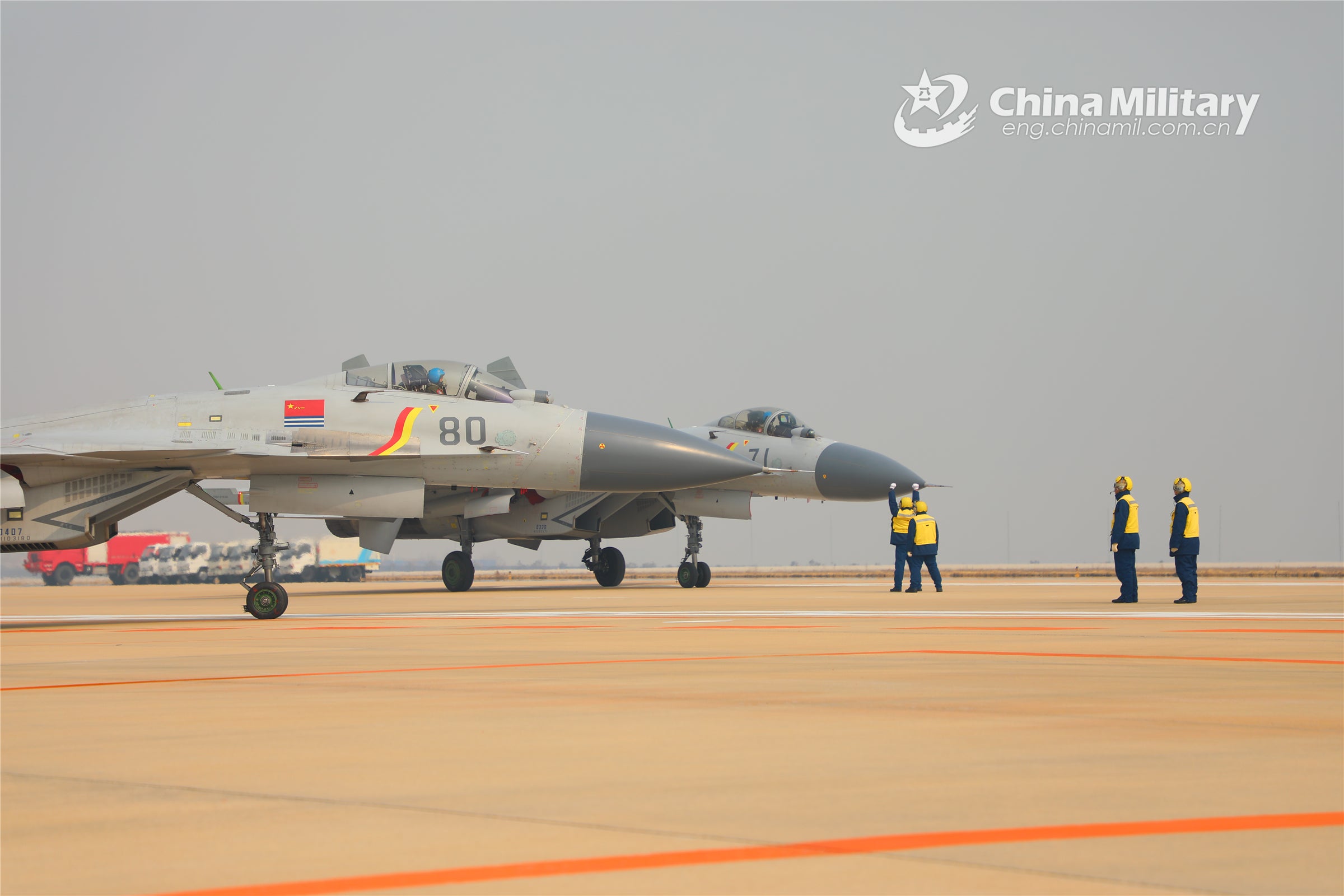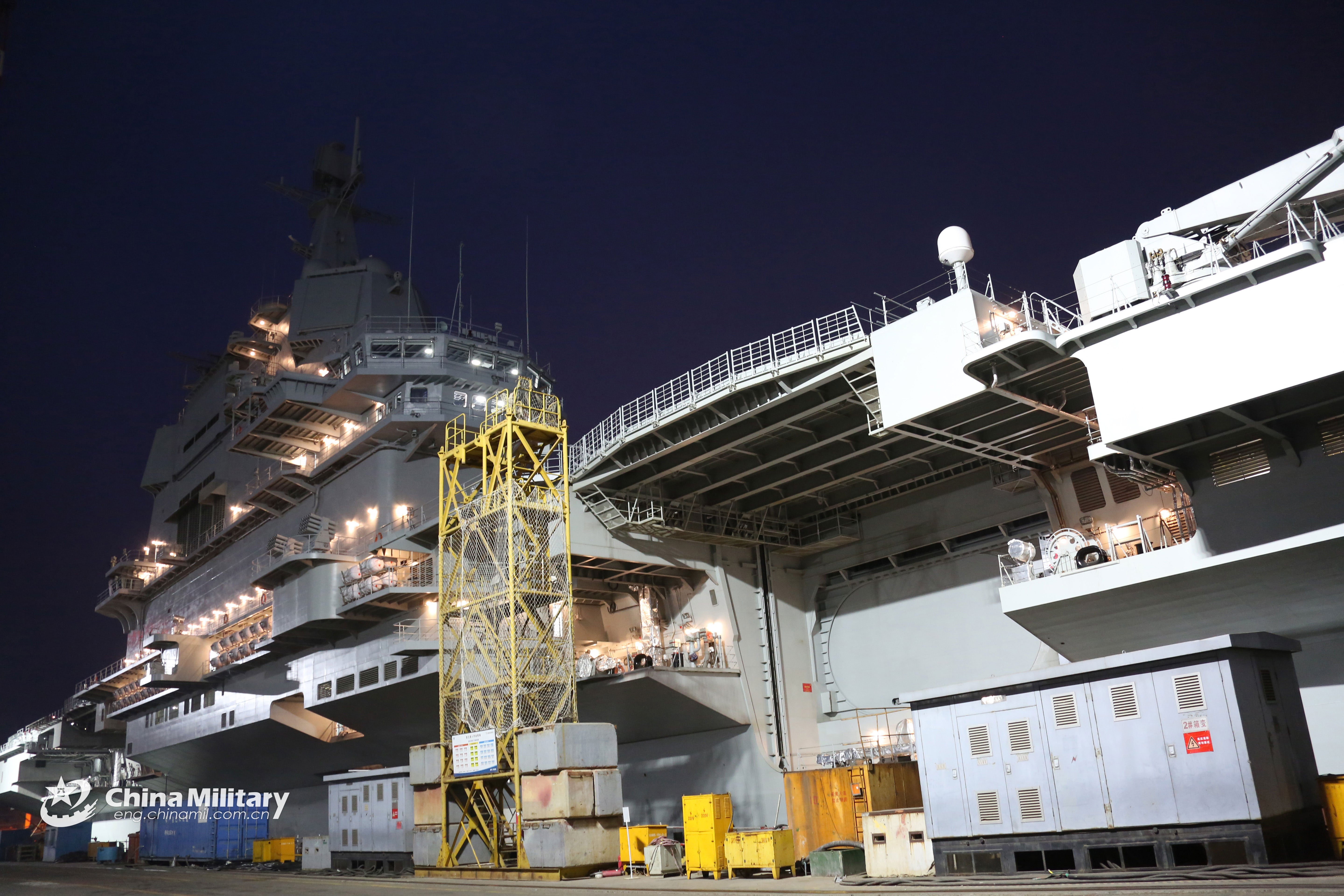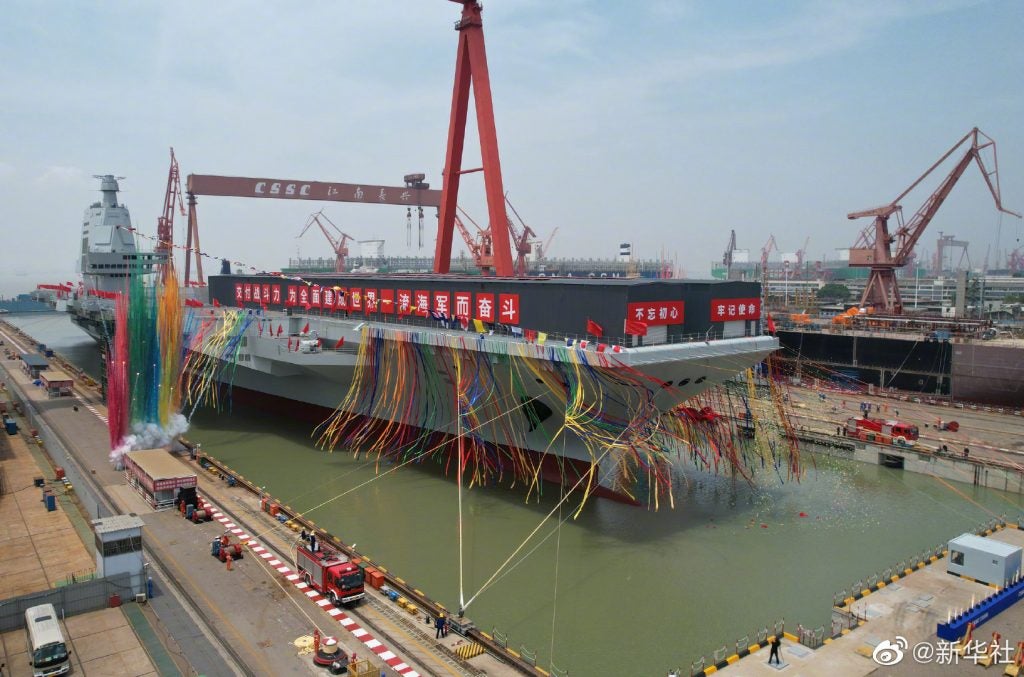China Launches Fujian Type 003 Carrier – Here’s What We Know
The highly anticipated launch of China’s Type 003 aircraft carrier, now officially named Fujian, took place on 17 June. The launching ceremony of the Fujian, which is the most advanced carrier built by China to date, was attended by Xu Qiliang, a member of the Political Bureau of the Communist Party of China Central Committee and vice-chairman of the Central Military Commission (CMC). The aircraft carrier will continue undergoing final construction and fitting out at the Jiangnan Shipyard located in Shanghai.
News of the possible launch began circulating several weeks ago, after work restarted at the shipyard following a slow-down due to Covid-19-related restrictions. The Center of Strategic and International Studies (CSIS) released a brief article detailing the progress on the carrier and a satellite image taken on 31 May showing that the dry dock was not flooded at the time. According to CSIS, a notification was sent out by the Maritime Safety Administration of China for ships to clear the area surrounding the dry dock, this news further amplified rumors of the launch. Planet Labs released a satellite image taken on 14 June showing the dry dock of the carrier fully flooded.
The Type 003

The carrier which is now known as the Fujian will be the biggest carrier built by China, so far. The ship boasts a massive flight deck that is measured to be 313 meters long and 76 meters wide, it has three deck catapults and two massive elevators located on the starboard side of the ship. The overall design of the ship mirrors that of past and current “Super Carriers” with their large angled decks and catapults.
The presence of catapults on Type 003 makes it China’s first aircraft carrier with Catapult-assisted Take-off, Barrier Arrested Recovery (CATOBAR) capabilities, a massive leap in the nation’s carrier capabilities. Furthermore, a press release for the launch event confirmed that Fujian was equipped with Electromagnetic Aircraft Launch System (EMALS) catapults, making it the third carrier to launch with the system, the first two being USS Ford and USS John F. Kennedy.

EMALS is capable of launching aircraft much heavier than the prior steam catapult system, allowing for flexibility on the carrier deck when launching heavily loaded aircraft and having margins to launch future aircraft. The system is also capable of lessening the stresses on the airframes by having a very elegant acceleration profile when compared to steam catapult systems. This new capability along with the ship’s general characteristics is what will set it apart from the People’s Liberation Army Navy’s (PLAN) two other carriers: Liaoning (CV-16) and Shandong (CV-17), which are equipped with ski jumps that allow for Short Take-off, Barrier Arrested Recovery (STOBAR).
While the progress of Type 003 went on steadily, work on the elements of its future Carrier Air Wing (CAW) has also been ongoing on the side. The carrier air wing which will go aboard the 003 will be significantly different from that of its predecessors. This new air wing will somewhat mirror that of the U.S. Navy’s future air wing with its mix of fourth and fifth-gen aircraft.

The principal aircraft of the air wing is expected to be a navalized version of the Shenyang FC-31 which might be dubbed the J-35, the other main aircraft in the air wing will be the Xian KJ-600, an aircraft that will serve the same role as the E-2D Hawkeye of the U.S. Navy. The air wing is also likely to include some fourth-gen aircraft such as a newer version of the Shenyang J-15, which has been rumored for a long time, and perhaps an Electronic Warfare (EW) version akin to the U.S. Navy’s EA-18G Growler.
China has also been working on the infrastructure to support the new carrier. On the island of Hainan, the construction of a new dry dock that can hold the carrier broke ground a few months ago. Lingshui air base has also undergone some expansion to support the future growth of carrier air wings. The island is currently home to two naval bases, Sanya and Yulin, which are home to Shandong (CV-17) and other ships.
Implications

The launch of Type 003 marks a very significant moment for the PLAN’s modernization. The service has grown significantly under Xi Jinping, this trend is also present in other services such as the People’s Liberation Army Rocket Force (PLARF), often outpacing the worst-case scenario estimates by the U.S. Department of Defense. It has been long rumored that China hopes to field six fleet carriers by the end of the decade, therefore Fujian is a major step that highlights the ambitions of China for the region.
The new carrier will allow China to further reinforce its claims in the South China Sea region, it might also come into play in a conflict over Taiwan. However, while there are many strategies that the various nations with carrier have ascribed to, it isn’t clear what strategies China might pursue for its aircraft carriers. Nonetheless, the carrier has a long way to go before it is commissioned and declares its initial operational capability.

